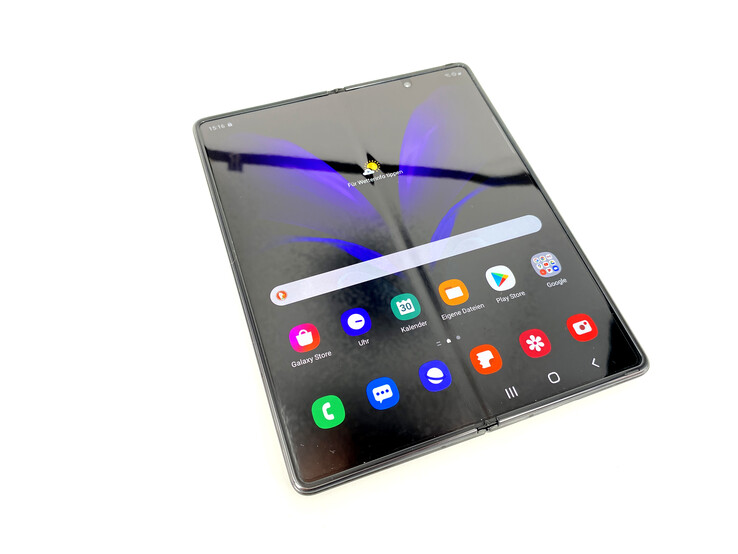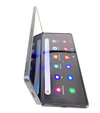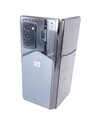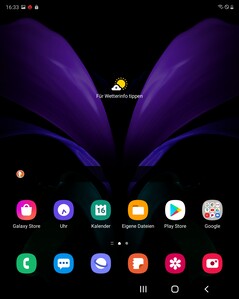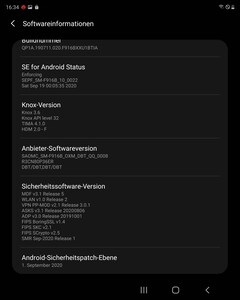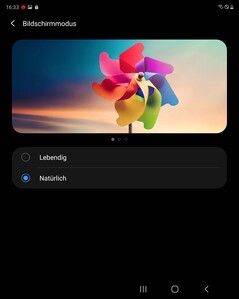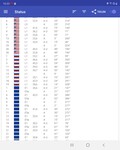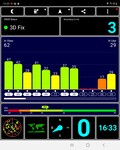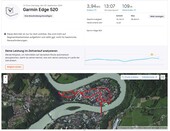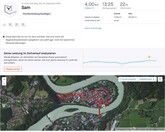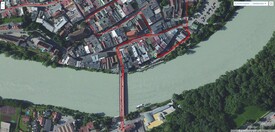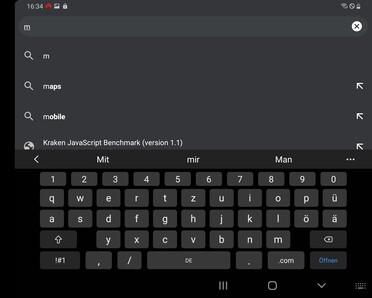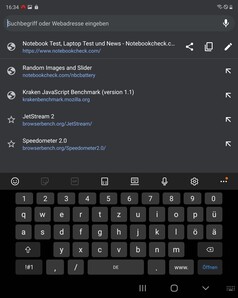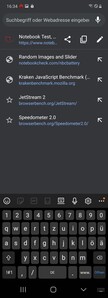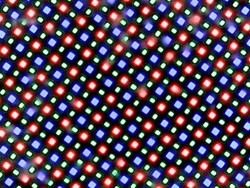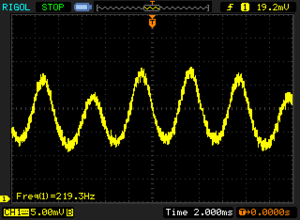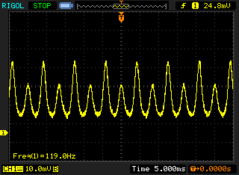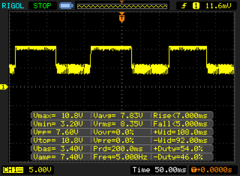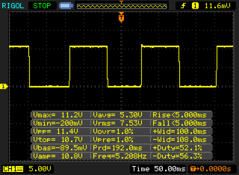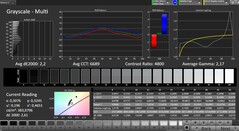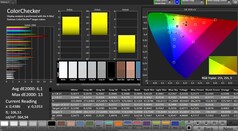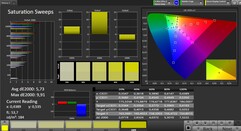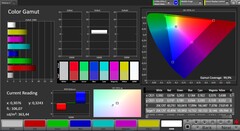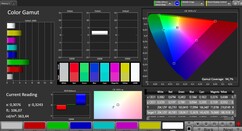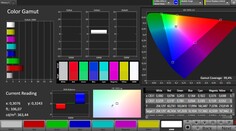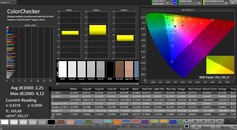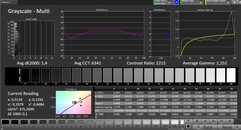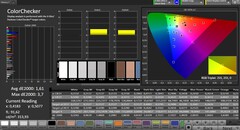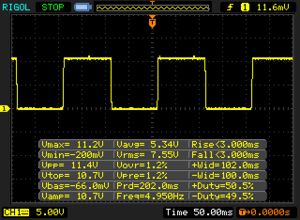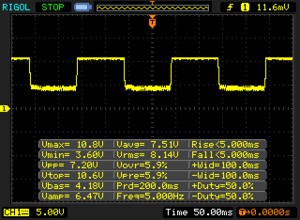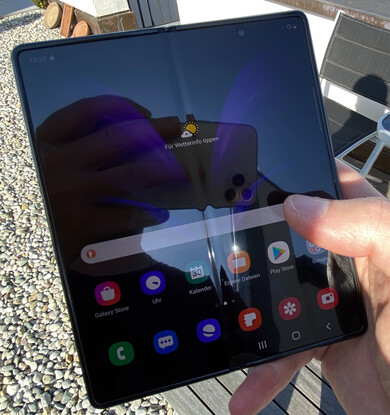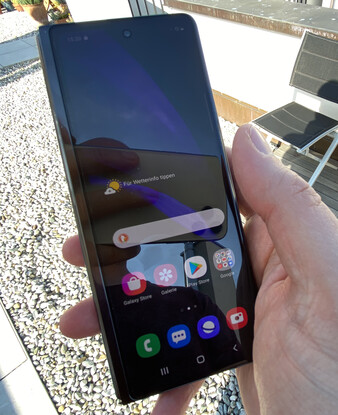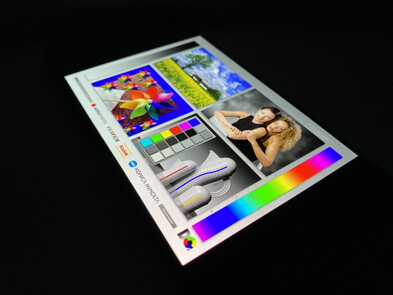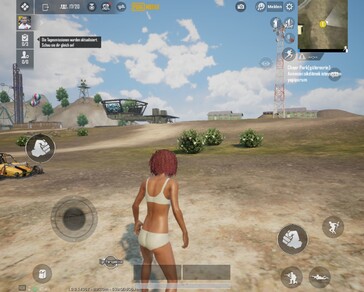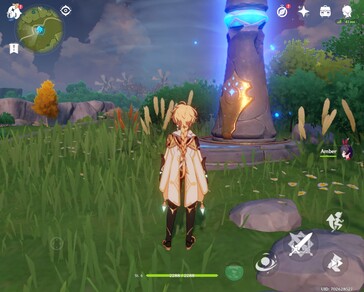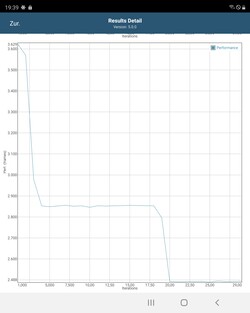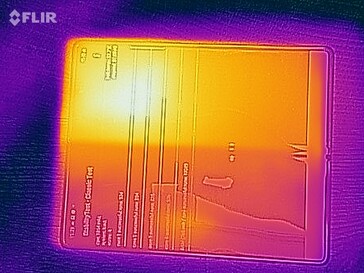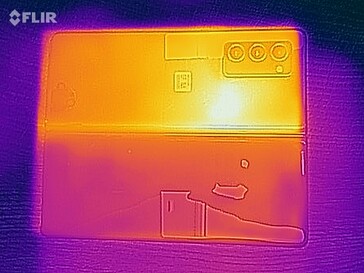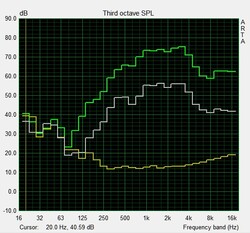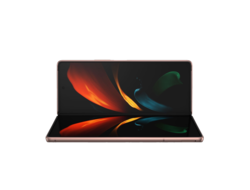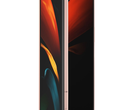Samsung Galaxy Z Fold2 5G Smartphone Review - A great and expensive foldable phone

The successor of the Samsung Galaxy Fold is called the Galaxy Z Fold2 5G - a name change that probably indicates Samsung's intentions to use the Galaxy Z series for all its foldable smartphones. The Galaxy Z Flip was the first representative of this series, although it followed a slightly different concept to the Galaxy Fold and looked more like one of the foldable smartphones from the early 2000s in the process.
The Fold devices, on the other hand, look like a narrow smartphone when folded, which then expands into an almost square, tablet-like screen, when opened. There are still hardly any folding smartphones on the market since the release of the first Galaxy Fold. Still, the second-generation model promises to have made significant improvements with its more flexible hinge and larger front screen.
Like its predecessor, the Galaxy Z Fold2 5G plays in exceedingly high price ranges. Nearly €2,000 must be put on the table for Samsung's latest foldable, but is it worth it?
Comparison devices
Rating | Date | Model | Weight | Drive | Size | Resolution | Price |
|---|---|---|---|---|---|---|---|
| 87.6 % v7 (old) | 10 / 2020 | Samsung Galaxy Z Fold2 5G SD 865+ (Plus), Adreno 650 | 279 g | 256 GB UFS 3.1 Flash | 7.60" | 2208x1768 | |
| 82.5 % v7 (old) | 03 / 2020 | Samsung Galaxy Z Flip SD 855+, Adreno 640 | 183 g | 256 GB UFS 3.0 Flash | 6.70" | 2636x1080 | |
| 86.4 % v7 (old) | 10 / 2019 | Samsung Galaxy Fold SD 855, Adreno 640 | 276 g | 512 GB UFS 3.0 Flash | 7.30" | 2152x1536 | |
| 76.1 % v7 (old) | 06 / 2020 | Motorola Razr 2019 SD 710, Adreno 616 | 205 g | 128 GB UFS 2.0 Flash | 6.20" | 2142x876 | |
| 82.6 % v7 (old) | 04 / 2020 | Huawei Mate Xs Kirin 990 5G, Mali-G76 MP16 | 300 g | 512 GB UFS 3.0 Flash | 8.00" | 2480x2200 | |
| 87.1 % v7 (old) | 09 / 2019 | Apple iPhone 11 Pro Max A13 Bionic, A13 Bionic GPU | 226 g | 64 GB SSD | 6.50" | 2688x1242 |
Case - Improved hinge on Z Fold2
While the Galaxy Fold was only available in dull hues like black or silver-grey, colour comes into play for its successor. Although there are still only two basic colours from which to choose, bronze and black, the hinge cover can be customised in metallic shades of silver, gold, blue and red.
Another nice change is that this time the screens get by with a small punch hole on the inside display and an almost equally sized notch on outside display. The latter display is significantly larger than the one Samsung included in last year's model, too.
The smartphone is similar in weight to its predecessor, but when unfolded it now looks squarer, since the Galaxy Z Fold2 5G is much taller than the Galaxy Fold. Samsung has protected outer sides with Gorilla Glass Victus, which is said to be even more scratch-resistant and sturdy than Gorilla Glass 6.
While the outer sides are quite well protected, the inner display will undoubtedly draw more attention. Apparently, Samsung has used Ultra-Thin Glass again, which it has covered with a protective film. Nevertheless, initial scratch tests have shown that the interior display is easily damaged, once again. Samsung itself also warns on the packaging foil of the smartphone that sharp objects or even fingernails could damage the larger of the two displays.
Even though the interior display continues to be delicate, the new hinge is a real highlight of the Galaxy Z Fold2 5G. Once again, Samsung has used magnets to hold the smartphone together when closed. It can also be opened with one hand, but our device offers a good level of resistance in this regard. The smartphone can now be opened in any position, like a convertible laptop, which is another change from the first Galaxy Fold. The software adapts accordingly, and you can, for example, watch YouTube videos in the upper half of the smartphone while it is open. This opens many possibilities and makes the Galaxy Z Fold2 more versatile, in our opinion.
The maximum opening angle is 180°, but the hinge is stable and prevented us from opening the device any further and damaging the screen. Our unit is well made and fits our hands nicely, but we should point that the handset offers no IP protection against water or dust.
Connectivity - Galaxy cell phone with fast memory
The Galaxy Z Fold2 5G is equipped with 256 GB of state-of-the-art UFS 3.1 storage and 12 GB of RAM. The USB Type-C port operates on the fast USB 3.1 Gen.1 standard too, allowing the device to quickly transfer data with a PC or Mac via a cable. Of course, Bluetooth 5.1 and NFC for mobile payments are also available.
The Galaxy Z Fold2 5G does not support microSD cards though, and it only has one slot for a nano-SIM card. However, you can also use the device without a physical SIM card thanks to its built-in eSIM.
Software - Apps can change the screen
Samsung's OneUI 2.5 is based on Android 10 and comes with quite recent security patches at the time of testing.
Apps that are open on the outer display can be transferred to the larger, inner, screen by opening the smartphone. However, this is only true if the app supports a resolution change while being used. If you want to go the other way round, i.e. to continue to view the apps when the phone is closed, then you must first designate these apps in settings. The nice thing about this transition is that it works completely without interruption when playing YouTube videos, for example.
Pre-installed advertising apps are also pre-installed on the Galaxy Z Fold2 5G. Some of these can only be deactivated and are then no longer visible, but they still occupy storage space.
Communication & GPS - Fast Wi-Fi, LTE and 5G
The Galaxy Z Fold2 5G comes, as its name suggests, with state-of-the-art communication options like 5G, LTE with up to 2 GBit/s downloads, and Wi-Fi 6. NFC and Bluetooth 5.1 are, of course, also on board, as we mentioned earlier.
The reception of the foldable smartphone is rather average, though. Other smartphones that are directly next to it offer higher signal strength on the same network for some reason. The Z Fold2 offers ok reception overall; our review unit offered at least half reception when being used inside in built-up areas.
With that said, the Z Fold2 offered excellent Wi-Fi performance in our tests, which we conducted using our reference Netgear Nighthawk AX12 router. The Z Fold2 outshines most other folding smartphones here and even the likes of the iPhone 11 Pro Max. Samsung's latest foldable smartphone also maintains impressive signal strength.
The Z Fold2 reaches a GPS accuracy of 3 metres outdoors without delay, which is exceptionally good. Additionally, the device can access many satellite networks, allowing another tracking network to step in if one has low coverage.
We also took the Z Fold2 on a bike ride to compare its location accuracy against a Garmin Edge 520. The foldable smartphone fared well in this practical test and maintained accurate tracking throughout. At worst, there are minimal deviations from the actual route, so we can recommend the Z Fold2 for use as a navigation system.
Telephone Functions & Call Quality - Only closed calls
Making a call with the Galaxy Fold2 5G is only possible when the device is closed as the earpiece is on the outside. The earpiece sounds good and brings the other person's voice to us reliably and clearly. The microphone, however, makes our voice sound quite tinny, as our counterpart confirmed to us during a phone call.
You can also use the phone open with the loudspeaker and the hands-free microphone, which makes the person on the other end of the call sound quite good. Our voice is also recorded more warmly and without interference, while the microphones can still pick our voice up even if we are speaking quietly.
As we mentioned earlier in this review, you only use a physical SIM or an eSIM currently. However, dual-SIM functionality will be activated via a software update. The Z Fold2 supports VoLTE and VoWiFi without any problems, though.
Cameras - Flexible lenses in Z Fold2
The three camera lenses on the back of the case all have a resolution of 12 MP. In addition to the standard lens, there is also a telephoto and an ultra-wide-angle lens, so in theory, you should be able to zoom between the lenses without any loss of quality. This also works in the software, as it allows you to zoom in and out smoothly between the ultra-wide-angle and standard lenses. The telephoto lens, on the other hand, is probably only used in bright lighting conditions because of its smaller aperture. The 10x magnification that the Z Fold2 offers is only done with software, so it is only a digital zoom.
The main lens takes good photos, and objects in the focus area appear sharp with plenty of detail. However, it does not offer the same light-sensitivity as other camera sensors that use pixel binning. These also offer a higher absolute resolution and reduce it to increase light sensitivity by combining several pixels into one. So, the main camera is also not as flexible because it cannot capture images in greater than 12 MP. The main camera does well in low light though and takes detailed pictures. Exposure levels could be better, in our opinion.
The ultra-wide-angle lens also takes crisp-looking photos because of its high megapixel count. Accordingly, our test shots look sharp.
Videos can be recorded in up to 4K and 60 FPS, as you would expect from a high-end smartphone. However, recording videos at these settings means that you cannot use Auto framing, Samsung's new autofocus technology. This is only available at lower resolutions, for some reason. With that said, our test videos are a joy to watch because they are well lit, sharp, while the autofocus reacted precisely and quickly.
The default camera app on the Z Fold2 5G has been adapted to its large display. One can, for example, make the viewfinder smaller to display recently taken pictures next to it, or take another picture of a subject while making exposure adjustments in the built-in professional mode. The front display can also be used for previewing shots, which is interesting for taking selfies or portraits - what with the device having better rear cameras and all.
The Z Fold2 5G has two identical front-facing cameras, one on the inside display and one on the outside, making it quite flexible. Unsurprisingly, the two cameras produce comparable images, with both able to capture scenes brightly and in enough detail.
Image comparison
Choose a scene and navigate within the first image. One click changes the position on touchscreens. One click on the zoomed-in image opens the original in a new window. The first image shows the scaled photograph of the test device.
Hauptobjektiv BlumeHauptobjektiv UmgebungHauptobjektiv Low LightUltraweitwinkelIn our laboratory, the main camera exhibits minimal blur in perfect lighting conditions, but we can afford to be fussy when testing this class of smartphone. The main camera defines colours well, but we do notice some blurring, especially towards the edges of the image.
Image quality remains good with almost no light, though. However, colours generally look a bit too bright for our liking.
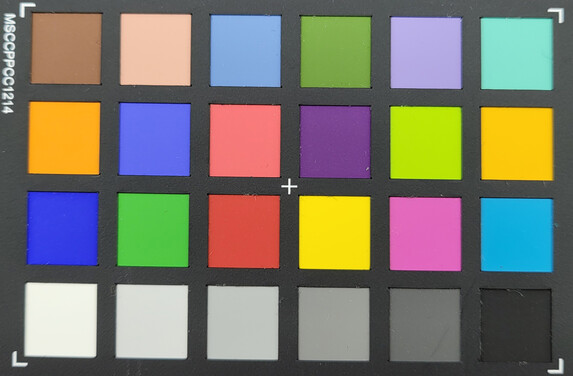
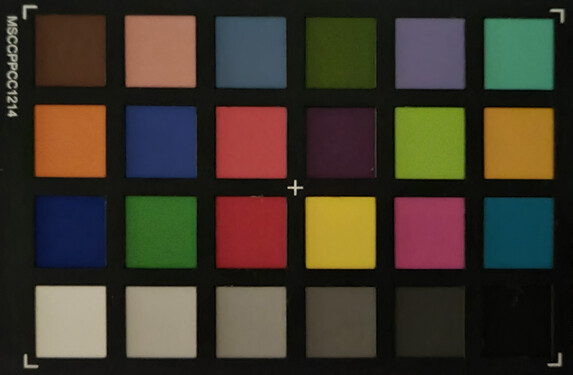
Accessories & Warranty - Exclusive covers
The beautifully designed box of the Galaxy Fold2 5G contains a quick charger, a matching USB Type-C to Type-C cable, along with a SIM tool and an AKG-branded pair of USB Type-C earbuds.
Samsung has come up with its own wireless charger too, in which the smartphone can be charged lying down or standing up - allowing you to continue using it unhindered. Samsung charges around €50 for the privilege, for reference. The company also sells special aramid covers for the device, which are made from a blend of synthetic fibres that look like carbon or leather. These will set you back between €60 and €80 depending on the one that you purchase.
Input Devices & Operation - A fingerprint sensor on the outside
The keyboard is split by default when the smartphone is open, allowing you to type with both hands. However, you can also use the on-screen keyboard just like you would on any other smartphone or tablet. Both methods work well, and there are no sensitivity or precision issues around the bend in the middle of the display. Purely haptically, the fold is, of course, a bit unnerving, but it does not cause any problems when using the device.
The outside display is tall and skinny, making the keyboard either very narrow or overly stretched, depending on its orientation. But here, too, the smartphone splits the keyboard in widescreen mode, so it is reasonably easy to reach. Overall, it is still possible to use the keyboard in this way, but it is not as comfortable as the other option.
Samsung has placed the fingerprint sensor on the right-hand side of the case, integrating it within the power button. The combination allows the device to automatically identify you by your fingerprint when you switch on the phone, which is handy. Facial recognition is also possible via the outer and inner front-facing cameras. This works quickly and reliably, too.
Display - Fullscreen at last
The small display of the predecessor on the outside has given way to an almost full-screen display, while there is only a small punch-hole camera that could get in the way on the inner display. By contrast, Samsung employed a large indentation in the upper corner of the Galaxy Fold, as we discussed in our review. The inner display offers almost a 4:3 form factor, but the front display is extremely narrow and long. Both screens support HDR10+, but only the larger inner display can operate at a 120 Hz refresh rate.
The brightness of the interior display is good with a full white background and much better than the Galaxy Fold. The maximum brightness does not yet come close to that of conventional smartphones, but it is enough for viewing HDR content. Also, the display is evenly lit, fortunately.
| |||||||||||||||||||||||||
Brightness Distribution: 96 %
Center on Battery: 637 cd/m²
Contrast: ∞:1 (Black: 0 cd/m²)
ΔE ColorChecker Calman: 2.25 | ∀{0.5-29.43 Ø4.78}
ΔE Greyscale Calman: 2.2 | ∀{0.09-98 Ø5}
99.9% sRGB (Calman 2D)
Gamma: 2.17
CCT: 6689 K
| Samsung Galaxy Z Fold2 5G AMOLED, 2208x1768, 7.6" | Samsung Galaxy Z Flip Dynamic AMOLED, 2636x1080, 6.7" | Samsung Galaxy Fold Infinity Flex-Display (Dynamic AMOLED, 7,3") und Super AMOLED (4,6"), 2152x1536, 7.3" | Motorola Razr 2019 P-OLED, 2142x876, 6.2" | Huawei Mate Xs OLED, 2480x2200, 8" | Apple iPhone 11 Pro Max OLED, 2688x1242, 6.5" | |
|---|---|---|---|---|---|---|
| Screen | -11% | 1% | -91% | -27% | 20% | |
| Brightness middle (cd/m²) | 637 | 705 11% | 531 -17% | 428 -33% | 417 -35% | 790 24% |
| Brightness (cd/m²) | 635 | 709 12% | 532 -16% | 428 -33% | 418 -34% | 790 24% |
| Brightness Distribution (%) | 96 | 97 1% | 97 1% | 89 -7% | 99 3% | 97 1% |
| Black Level * (cd/m²) | ||||||
| Colorchecker dE 2000 * | 2.25 | 3.1 -38% | 2.3 -2% | 6.39 -184% | 2.6 -16% | 1.4 38% |
| Colorchecker dE 2000 max. * | 4.12 | 5.4 -31% | 3.7 10% | 10.83 -163% | 7.7 -87% | 3.4 17% |
| Greyscale dE 2000 * | 2.2 | 2.7 -23% | 1.5 32% | 5 -127% | 2 9% | 1.9 14% |
| Gamma | 2.17 101% | 2.11 104% | 2.15 102% | 2.25 98% | 2.31 95% | 2.23 99% |
| CCT | 6689 97% | 6264 104% | 6631 98% | 7649 85% | 6276 104% | 6466 101% |
* ... smaller is better
Screen Flickering / PWM (Pulse-Width Modulation)
| Screen flickering / PWM detected | 219 Hz | ||
The display backlight flickers at 219 Hz (worst case, e.g., utilizing PWM) . The frequency of 219 Hz is relatively low, so sensitive users will likely notice flickering and experience eyestrain at the stated brightness setting and below. In comparison: 53 % of all tested devices do not use PWM to dim the display. If PWM was detected, an average of 8108 (minimum: 5 - maximum: 343500) Hz was measured. | |||
The interior and exterior displays flicker at reduced brightness levels because the OLED panels use pulse-width modification (PWM) to regulate luminosity. If you have sensitive eyes, then you should try the displays in advance. The response times of both displays are fast.
In our tests with the CalMAN software we found that the 'Natural' setting in the options offers the most lifelike colours. At the same time, the exterior display is even a little more accurate than the larger interior one. With that said, both displays are at an exceedingly high level, and you will not see any differences from reference colours with the naked eye.
Display Response Times
| ↔ Response Time Black to White | ||
|---|---|---|
| 6 ms ... rise ↗ and fall ↘ combined | ↗ 3 ms rise | |
| ↘ 3 ms fall | ||
| The screen shows very fast response rates in our tests and should be very well suited for fast-paced gaming. In comparison, all tested devices range from 0.1 (minimum) to 240 (maximum) ms. » 17 % of all devices are better. This means that the measured response time is better than the average of all tested devices (20.2 ms). | ||
| ↔ Response Time 50% Grey to 80% Grey | ||
| 10 ms ... rise ↗ and fall ↘ combined | ↗ 5 ms rise | |
| ↘ 5 ms fall | ||
| The screen shows good response rates in our tests, but may be too slow for competitive gamers. In comparison, all tested devices range from 0.165 (minimum) to 636 (maximum) ms. » 22 % of all devices are better. This means that the measured response time is better than the average of all tested devices (31.6 ms). | ||
The Galaxy Z Fold2 5G performs well outdoors, but one should avoid direct sunlight hitting the display, as the glare will quickly become strenuous for your eyes. The viewing angles of both displays leave nothing to be desired, though.
Performance - A lot of power for a lot of money
When it comes to performance, you can expect the best of the best from a smartphone that costs just under €2,000, and the Galaxy Z Fold2 5G delivers on all fronts. Samsung has equipped the smartphone with a Qualcomm Snapdragon 865+, one of the fastest SoCs currently available, making it even more powerful than its predecessor. The inclusion of the Snapdragon 865+ probably makes it the fastest foldable smartphone, and one of the fastest smartphones ever.
The foldable is a fast performer in terms of graphics performance, too. In off-screen tests, so with a fixed resolution, our review unit outperforms all other devices. However, results are a little tighter at native screen resolution, simply because the competition offers fewer pixels than the Z Fold2 does.
Our test device appears a bit tamer in browser benchmarks though, and only manages a midfield finish among other comparison devices. But we are talking about high-end smartphones anyway, so this still means that the Z Fold2 loads pages quickly, as it does with photos. Even complex HTML 5 pages load promptly and run smoothly.
| Jetstream 2 - 2.0 Total Score | |
| Average of class Smartphone (23.8 - 387, n=153, last 2 years) | |
| Apple iPhone 11 Pro Max (Safari Mobile 13.1) | |
| Samsung Galaxy Z Fold2 5G (Chrome 85) | |
| Average Qualcomm Snapdragon 865+ (Plus) (69.8 - 75.5, n=4) | |
| Samsung Galaxy Z Flip (Chrome 80) | |
| Huawei Mate Xs (Huawei Browser 10.1) | |
| Samsung Galaxy Fold (Samung Browser 10.1) | |
| Motorola Razr 2019 (Chrome 83) | |
| JetStream 1.1 - Total Score | |
| Apple iPhone 11 Pro Max (Safari Mobile 13.1) | |
| Samsung Galaxy Z Fold2 5G (Chrome 85) | |
| Average Qualcomm Snapdragon 865+ (Plus) (121.7 - 131.5, n=4) | |
| Samsung Galaxy Z Flip (Chrome 80) | |
| Samsung Galaxy Fold (Samsung Browser 10.1) | |
| Huawei Mate Xs (Huawei Browser 10.1) | |
| Motorola Razr 2019 (Chrome 83) | |
| Speedometer 2.0 - Result 2.0 | |
| Average of class Smartphone (15.2 - 643, n=126, last 2 years) | |
| Apple iPhone 11 Pro Max (Safari Mobile 13.1) | |
| Samsung Galaxy Z Fold2 5G (Chome 85) | |
| Average Qualcomm Snapdragon 865+ (Plus) (41.2 - 73.3, n=4) | |
| Huawei Mate Xs (Huawei Browser 10.1) | |
| Samsung Galaxy Z Flip (Chrome 80) | |
| Samsung Galaxy Fold (Samsung Browser 10.1) | |
| Motorola Razr 2019 (Chome 83) | |
| WebXPRT 3 - Overall | |
| Apple iPhone 11 Pro Max (Safari Mobile 13.1) | |
| Average of class Smartphone (38 - 380, n=34, last 2 years) | |
| Samsung Galaxy Fold (Samsung Browser 10.1) | |
| Average Qualcomm Snapdragon 865+ (Plus) (114 - 126, n=4) | |
| Samsung Galaxy Z Fold2 5G (Chrome 85) | |
| Samsung Galaxy Z Flip (Chrome 80) | |
| Huawei Mate Xs (Huawei Browser 10.1) | |
| Motorola Razr 2019 (Chrome 83) | |
| Octane V2 - Total Score | |
| Apple iPhone 11 Pro Max (Safari Mobile 13.1) | |
| Average of class Smartphone (2228 - 121337, n=201, last 2 years) | |
| Samsung Galaxy Z Fold2 5G (Chrome 85) | |
| Average Qualcomm Snapdragon 865+ (Plus) (25953 - 27360, n=4) | |
| Samsung Galaxy Fold (Samsung Browser 10.1) | |
| Samsung Galaxy Z Flip (Chrome 80) | |
| Huawei Mate Xs (Huawei Browser 10.1) | |
| Motorola Razr 2019 (Chrome 83) | |
| Mozilla Kraken 1.1 - Total | |
| Motorola Razr 2019 (Chrome 83) | |
| Huawei Mate Xs (Huawei Browser 10.1) | |
| Samsung Galaxy Z Flip (Chrome 80) | |
| Samsung Galaxy Fold (Samsung Browser 10.1) | |
| Samsung Galaxy Z Fold2 5G (Chrome 85) | |
| Average Qualcomm Snapdragon 865+ (Plus) (1854 - 1947, n=4) | |
| Average of class Smartphone (257 - 28190, n=156, last 2 years) | |
| Apple iPhone 11 Pro Max (Safari Mobile 13.1) | |
* ... smaller is better
The Z Fold2 does not support expandable storage using a microSD. So, you must make do with its 256 GB of UFS 3.1 flash memory, which cut a fine figure in our tests.
| Samsung Galaxy Z Fold2 5G | Samsung Galaxy Z Flip | Samsung Galaxy Fold | Motorola Razr 2019 | Huawei Mate Xs | Apple iPhone 11 Pro Max | Average 256 GB UFS 3.1 Flash | Average of class Smartphone | |
|---|---|---|---|---|---|---|---|---|
| AndroBench 3-5 | -17% | -47% | -68% | -10% | 33% | 64% | ||
| Sequential Read 256KB (MB/s) | 1681 | 1443 -14% | 1303 -22% | 510 -70% | 1767 5% | 1757 ? 5% | 2226 ? 32% | |
| Sequential Write 256KB (MB/s) | 757 | 523 -31% | 394.5 -48% | 186.4 -75% | 402.7 -47% | 1204 ? 59% | 1848 ? 144% | |
| Random Read 4KB (MB/s) | 232.1 | 184.5 -21% | 158.4 -32% | 88.6 -62% | 202.9 -13% | 287 ? 24% | 295 ? 27% | |
| Random Write 4KB (MB/s) | 220.6 | 212.9 -3% | 34.41 -84% | 80.1 -64% | 259.1 17% | 318 ? 44% | 335 ? 52% | |
| Sequential Read 256KB SDCard (MB/s) | 82.6 ? | 75.9 ? | ||||||
| Sequential Write 256KB SDCard (MB/s) | 72.1 ? | 61.9 ? |
Games - 60 FPS is almost always possible
With the tools of GameBench, we checked the framerates in some recent triple-A mobile games. Our test device reached a stable 60 FPS in PUBG Mobile, but we noticed framerate drops to below 50 FPS in the very demanding online role-playing game Genshin Impact. The game always remains playable, though.
The huge display, which nevertheless fits well in our hands, is ideal for gaming. The expanse of screen provides better immersion than on many other smartphones, principally because of its size. We encountered no problems with using the accelerometer or and touchscreen during our gaming tests, either.
Emissions - Good stereo speakers in the Galaxy phone
Temperature
A large smartphone also tends to offer a lot of space for cooling, which is the case with the Z Fold2. We measured a maximum external temperature of 41.8 °C on the top side of the device during our tests, but this is limited to a small area. The smartphone stays much cooler in other areas too, and 41.8 °C is not a critical temperature.
Under longer loads, however, the smartphone cannot maintain its full performance. Our review unit lost almost a third of its peak performance after thirty runs of GFXBench 3 Manhattan, for example.
(±) The maximum temperature on the upper side is 41.8 °C / 107 F, compared to the average of 35.2 °C / 95 F, ranging from 21.9 to 247 °C for the class Smartphone.
(+) The bottom heats up to a maximum of 36.5 °C / 98 F, compared to the average of 34 °C / 93 F
(+) In idle usage, the average temperature for the upper side is 26 °C / 79 F, compared to the device average of 32.9 °C / 91 F.
Speakers
The stereo speakers at the top and bottom of the edges of the device are cleverly placed, allowing them to be used in both closed and open positions. Of course, the device can only generate a stereo effect if it is held in the correct position. You must hold the Z Fold2 in landscape mode to hear the stereo effect, and even then, you must make sure you have it the right way up.
Looking at the results of our pink noise test, then it seems that the speakers in the Z Fold2 are quite like those in its predecessor. The ones in our review unit accentuate high-pitched tones slightly more though, which improves audio quality in our opinion. The Galaxy Fold offered decent speakers, meaning that the ones in the Z Fold2 can get loud while remaining balanced.
The Z Fold2 also supports audio output via USB Type-C or Bluetooth. Both worked well without any problems during our tests.
Samsung Galaxy Z Fold2 5G audio analysis
(+) | speakers can play relatively loud (83.6 dB)
Bass 100 - 315 Hz
(-) | nearly no bass - on average 68.5% lower than median
(+) | bass is linear (0% delta to prev. frequency)
Mids 400 - 2000 Hz
(-) | nearly no mids - on average 68.5% lower than median
(+) | mids are linear (0% delta to prev. frequency)
Highs 2 - 16 kHz
(-) | nearly no highs - on average 68.5% lower than median
(+) | highs are linear (0% delta to prev. frequency)
Overall 100 - 16.000 Hz
(-) | overall sound is not linear (117.4% difference to median)
Compared to same class
» 87% of all tested devices in this class were better, 7% similar, 6% worse
» The best had a delta of 11%, average was 35%, worst was 134%
Compared to all devices tested
» 96% of all tested devices were better, 2% similar, 2% worse
» The best had a delta of 4%, average was 24%, worst was 134%
Samsung Galaxy Fold audio analysis
(+) | speakers can play relatively loud (85.2 dB)
Bass 100 - 315 Hz
(-) | nearly no bass - on average 23.9% lower than median
(±) | linearity of bass is average (12.2% delta to prev. frequency)
Mids 400 - 2000 Hz
(+) | balanced mids - only 2.9% away from median
(+) | mids are linear (4.3% delta to prev. frequency)
Highs 2 - 16 kHz
(+) | balanced highs - only 2.8% away from median
(+) | highs are linear (2.7% delta to prev. frequency)
Overall 100 - 16.000 Hz
(±) | linearity of overall sound is average (16.7% difference to median)
Compared to same class
» 8% of all tested devices in this class were better, 6% similar, 86% worse
» The best had a delta of 11%, average was 35%, worst was 134%
Compared to all devices tested
» 28% of all tested devices were better, 7% similar, 65% worse
» The best had a delta of 4%, average was 24%, worst was 134%
Power Management - Good stamina
Energy Consumption
The large screen of the Z Fold2 dictates that the device consumes more power than that of normal smartphones, as the table below demonstrates. However, the Huawei Mate Xs is considerably more power-hungry under load, so Samsung has done a good job of optimising the Z Fold2 in this regard.
Our review unit can consume up to 10.5 W though, making it thirstier than all our comparison devices. By contrast, the Huawei Mate Xs tops out at 8.46 W.
| Off / Standby | |
| Idle | |
| Load |
|
Key:
min: | |
| Samsung Galaxy Z Fold2 5G 4500 mAh | Samsung Galaxy Z Flip 3300 mAh | Samsung Galaxy Fold 4235 mAh | Motorola Razr 2019 2510 mAh | Huawei Mate Xs 4500 mAh | Apple iPhone 11 Pro Max 3969 mAh | Average Qualcomm Snapdragon 865+ (Plus) | Average of class Smartphone | |
|---|---|---|---|---|---|---|---|---|
| Power Consumption | 42% | 42% | 42% | -40% | 10% | -18% | 16% | |
| Idle Minimum * (Watt) | 1 | 0.59 41% | 0.6 40% | 0.7 30% | 2.22 -122% | 0.92 8% | 1.3 ? -30% | 0.848 ? 15% |
| Idle Average * (Watt) | 2.1 | 0.88 58% | 0.85 60% | 1.2 43% | 3.94 -88% | 2.9 -38% | 3 ? -43% | 1.434 ? 32% |
| Idle Maximum * (Watt) | 2.8 | 0.95 66% | 1 64% | 1.8 36% | 4.01 -43% | 2.94 -5% | 3.19 ? -14% | 1.618 ? 42% |
| Load Average * (Watt) | 6.8 | 4.97 27% | 4.47 34% | 3.2 53% | 4.34 36% | 3.65 46% | 6.96 ? -2% | 7.01 ? -3% |
| Load Maximum * (Watt) | 10.5 | 8.37 20% | 9.02 14% | 5.2 50% | 8.46 19% | 6.18 41% | 10.5 ? -0% | 11.3 ? -8% |
* ... smaller is better
Battery Life
The battery in the Z Fold2 has grown minimally compared to the one that Samsung included its predecessor, with an increase of just 265 mAh. The Z Fold2 lasted significantly longer in our Wi-Fi battery test though, lasting 12:16 hours compared to the 10:00 hours of the original Galaxy Fold. This is only a mediocre value for all smartphones though, but it is enough for everyday use. Under load, the runtime is comparable to that of its predecessor and is on par with other foldable smartphones.
The included charger has a maximum output of 25 W. The bundled charger recharges our review unit fully in about 2 hours.
| Samsung Galaxy Z Fold2 5G 4500 mAh | Samsung Galaxy Z Flip 3300 mAh | Samsung Galaxy Fold 4235 mAh | Motorola Razr 2019 2510 mAh | Huawei Mate Xs 4500 mAh | Apple iPhone 11 Pro Max 3969 mAh | |
|---|---|---|---|---|---|---|
| Battery runtime | -26% | 1% | -29% | -17% | 41% | |
| Reader / Idle (h) | 30.9 | 29 -6% | 28.7 -7% | 16.5 -47% | 17.9 -42% | 43.6 41% |
| H.264 (h) | 13.9 | 8.8 -37% | 17.1 23% | 9.8 -29% | 12.7 -9% | 22.4 61% |
| WiFi v1.3 (h) | 12.3 | 10.8 -12% | 10 -19% | 7.8 -37% | 8 -35% | 15.2 24% |
| Load (h) | 5 | 2.6 -48% | 5.3 6% | 4.9 -2% | 6 20% | 6.8 36% |
Pros
Cons
Verdict - Improved, but also suitable for the mass market?
The Samsung Galaxy Z Fold2 5G is a piece of the future that you can try out right now. That may be great, but it comes at a price. Samsung wants just under €2,000 for its innovative smartphone, for which you will receive a premium device that still has a sensitive folding screen. The visible and noticeable crease in the middle of the interior screen is also unsightly.
Why does the foldable smartphone still feel great? On the one hand, because of the new hinge, which is much more flexible than its predecessor. On the other hand, the larger screens are an improvement, as is the software customisation, which, for example, provides seamless transfer of YouTube videos from the interior to the exterior display. This feature may not work well with all apps yet, but if it does work, it will be a great feature.
More suitable for everyday use and even higher quality than its predecessor, the Samsung Galaxy Z Fold2 5G takes many steps in the right direction. It is still extremely expensive, though.
The performance and features of the Galaxy Z Fold2 5G meet the standards that we have come to expect from a premium smartphone, as do the Wi-Fi speeds, GPS accuracy and its stylish design. Small annoyances exist though, such as the middling mobile network reception strength and the high maximum power consumption.
All in all, the Galaxy Z Fold2 5G is even more suitable for everyday use than its predecessor. In saying that, it remains expensive and, because of its sensitive screen, is only worthwhile for enthusiasts who have enough change lying around.
Samsung Galaxy Z Fold2 5G
- 08/31/2022 v7 (old)
Florian Schmitt




